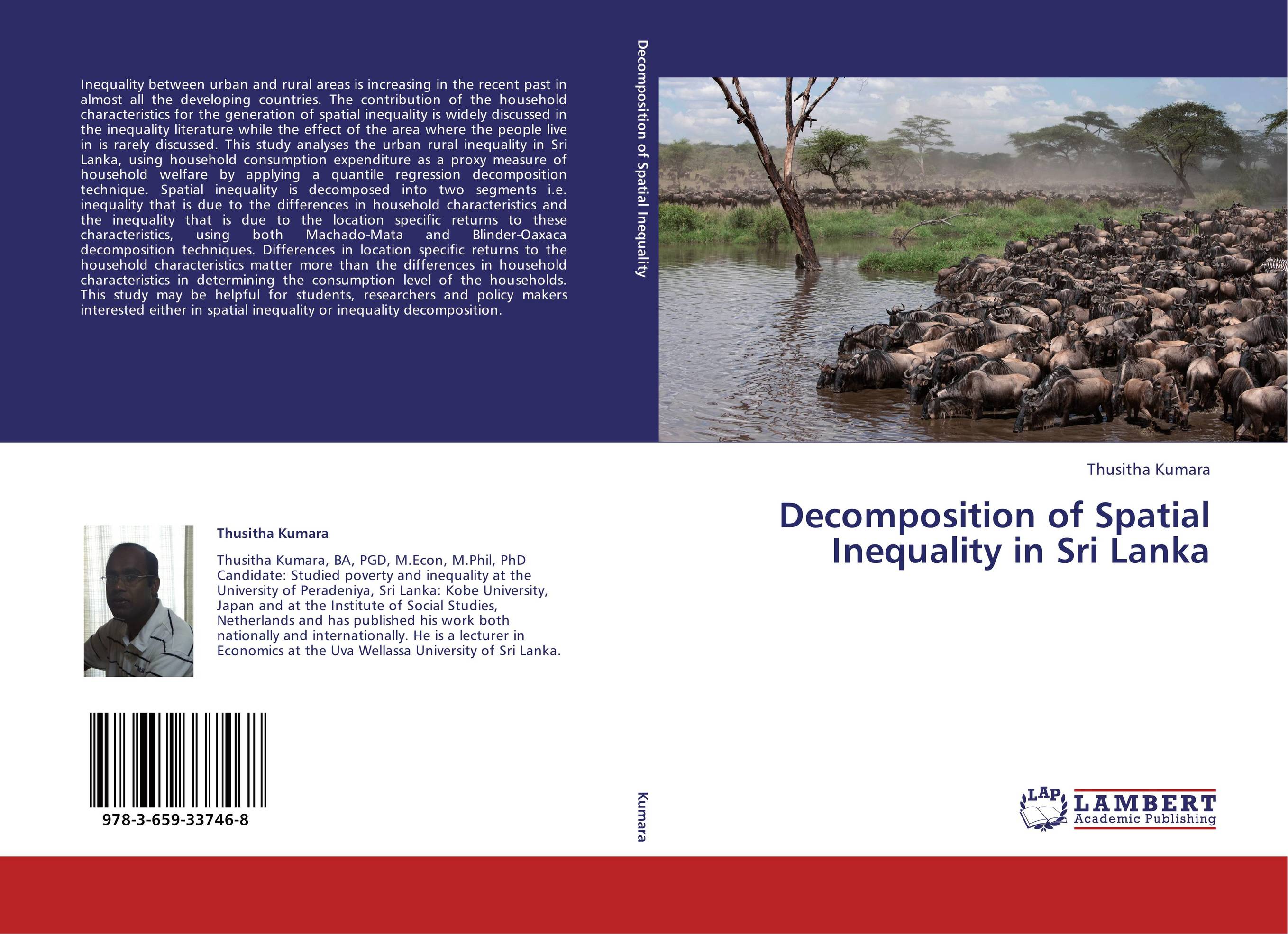| Поиск по каталогу |
|
(строгое соответствие)
|
- Профессиональная
- Научно-популярная
- Художественная
- Публицистика
- Детская
- Искусство
- Хобби, семья, дом
- Спорт
- Путеводители
- Блокноты, тетради, открытки
Decomposition of Spatial Inequality in Sri Lanka.

В наличии
| Местонахождение: Алматы | Состояние экземпляра: новый |

Бумажная
версия
версия
Автор: Thusitha Kumara
ISBN: 9783659337468
Год издания: 2013
Формат книги: 60×90/16 (145×215 мм)
Количество страниц: 120
Издательство: LAP LAMBERT Academic Publishing
Цена: 31921 тг
Положить в корзину
| Способы доставки в город Алматы * комплектация (срок до отгрузки) не более 2 рабочих дней |
| Самовывоз из города Алматы (пункты самовывоза партнёра CDEK) |
| Курьерская доставка CDEK из города Москва |
| Доставка Почтой России из города Москва |
Аннотация: Inequality between urban and rural areas is increasing in the recent past in almost all the developing countries. The contribution of the household characteristics for the generation of spatial inequality is widely discussed in the inequality literature while the effect of the area where the people live in is rarely discussed. This study analyses the urban rural inequality in Sri Lanka, using household consumption expenditure as a proxy measure of household welfare by applying a quantile regression decomposition technique. Spatial inequality is decomposed into two segments i.e. inequality that is due to the differences in household characteristics and the inequality that is due to the location specific returns to these characteristics, using both Machado-Mata and Blinder-Oaxaca decomposition techniques. Differences in location specific returns to the household characteristics matter more than the differences in household characteristics in determining the consumption level of the households. This study may be helpful for students, researchers and policy makers interested either in spatial inequality or inequality decomposition.
Ключевые слова: Sri Lanka, spatial inequality, Inequality decomposition, Qunantile Regression Decomposition, Urban Rural Inequality



